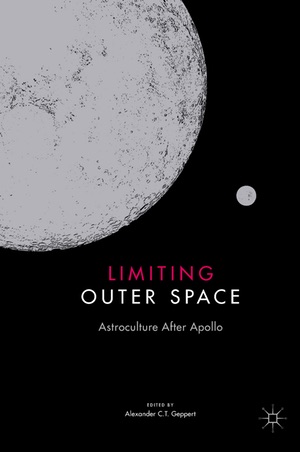Review: Limiting Outer Spaceby Jeff Foust
|
| One of the more interesting chapters links two seemingly disparate events: the Club of Rome study that predicted looming shortfalls in key resources and the development a decade later of the Strategic Defense Initiative. |
Limiting Outer Space is a collection of essays that examines these new limits on space exploration and what it calls the broader “astroculture” in the immediate post-Apollo era: primarily the 1970s but stretching in some cases into the 1980s. Those essays, focused on the United States and Western Europe, looking at the changing space landscape and its cultural implications as Apollo ended amid uncertainty about the future of spaceflight.
The essays span a wide range of topics. In one, historian Roger Launius examines the various reactions to the end of Apollo, from the loss in faith of technology as a solution to problems to the rise of the pro-space movement in the 1970s to the persistent nostalgia about Apollo (and those who deny it ever happened.) Another chapter examined the “heightened sense of self-reflection” that the Apollo missions engendered as seen in several novels from the 1970s.
While there was a retrenchment from the ambitious but unsustainable visions from the Space Race, the essays also show there was hope for the future and continued interest in spaceflight. One chapter describes how West Germany tied its future in spaceflight to the Spacelab module that the new European Space Agency agreed to develop for NASA, including astronaut recruitment campaigns that “gave the impression that spaceflight was no longer reserved for specially selected people.” Another essay examines the rise of LEGO’s series of spaceships and outposts during that decsde that depicted a future of humans working in space.
One of the more interesting chapters links two seemingly disparate events: the Club of Rome study that predicted looming shortfalls in key resources and the development a decade later of the Strategic Defense Initiative. That Club of Rome report provided fodder for space settlement advocates, who argued that space colonies could provide humanity with access to space solar power and other resources to address those concerns. But some of those early L-5 Society advocates of space colonies also noted that space solar power could also enable lasers for missile defense systems. With a few years, they advising the new Reagan Administration on space-based missile defense that resulted in SDI, or at least helped put in place the public mindset in support of it.
“The 1970s were a period of transition in how we perceived human spaceflight,” David Kirby writes in the book’s epilogue, facing new limits on its future based on both its capabilities and outside influences. Limiting Outer Space helps explain how that affected both spaceflight and society. Those changes might be dispiriting, but they were also a necessary, and inevitable, corrective from the Space Age’s overheated Cold War origins.
Note: we are temporarily moderating all comments subcommitted to deal with a surge in spam.
